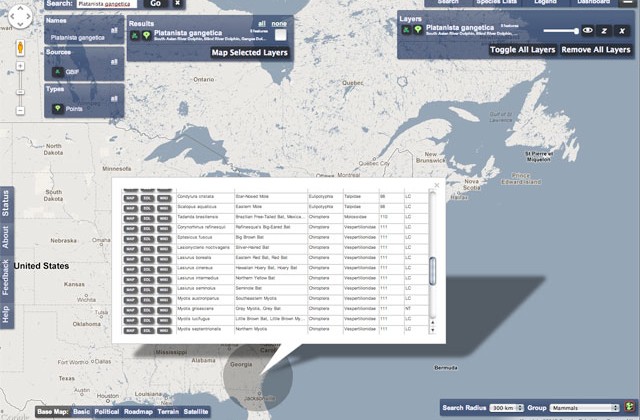Map of Life
Map of Life is built with the technology of Google Maps. The pilot of the Map of Life website allows users to map the global distribution of almost all 30,000 species of terrestrial vertebrate animals, including mammals, birds, amphibians, reptiles and North American fresh water fish.
The platform is meant to inform users about the world around them. Many people do not even know the diversity that lives in their own backyards. Map of Life gives users the opportunity to discover details about the origin, location and lifestyle of species both previously known and unknown.
“By highlighting the known distribution of species, the researchers hope to identify and fill knowledge gaps and also offer a tool for detecting change over time. They expect the map tool will prove useful for professional scientists, wildlife and land managers, conservation organizations, and interested laypersons alike. Sources for species location in the debut version include museum, local, and regional checklists, and the recorded observations of professional and amateur scientists alike.” Yale News
Further development of the map will require collaboration Between professional scientists and informed users. Future versions of the site will allow users to add in missing information, much like with a Wikipedia page.
The Map of Life was created by Walter Jetz, associate professor of ecology and evolutionary biology at Yale University in partnership with, University of Colorado and the Calgary Zoological Society. Funding from, The National Science Foundation and NASA and contributions from, the Encyclopedia of Life, Senckenberg Museum, BiK-F Germany, The International Union for Conservation of Nature and the Global Biodiversity Information Facility.




